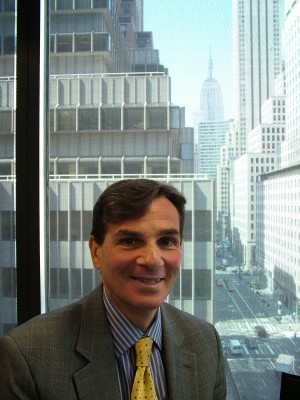Signature Bank quietly ascends to the top
When Joseph DePaolo walks out of Grand Central Terminal each morning, he sees two bright reminders, one blue and one red, of the giants of the banking market.
“Bank of America and Citibank,” DePaolo said, the branches of which he passes in the early morning on his way to work as the president and CEO of Signature Bank.
But the reminders of the big banks, the ones that are “too big to fail,” don”™t weigh heavily on his mind. Signature Bank, which focuses on private client banking in the New York metropolitan area, topped the list of America”™s best banks published by Forbes magazine in December ”” an honor reflective of Signature Bank”™s strong loan portfolio and strong financial performance over the past five years.
“Signature has racked up an impressive financial performance. It has posted 20 straight quarters of record earnings,” wrote Forbes reporter Kurt Badenhausen in the Dec. 22 article, which utilized data from SNL Financial to rank the 100 biggest banks by assets in terms of asset quality, capital adequacy and profitability.
Badenhausen noted that Signature Bank”™s revenue grew 21 percent in the past year, and that its 13.8 percent return on average equity, a measure of profitability over the past 12 months, was fifth among the nation”™s 100 largest banks by total assets.
Below Signature Bank on the list were those two banks DePaolo sees every morning ”” CitiGroup ranking 64th and Bank of America at 88th ”” as well as JPMorgan Chase at 73rd and Wells Fargo at 82nd. No bank with more than $1 trillion in assets cracked the top 50 on the Forbes list, and of the top 10, State Street ($275 billion in assets) was the only institution with more than $50 billion in assets.
With just 0.1 percent of Signature”™s loan portfolio listed as “nonperforming,” meaning that the debtor has not made scheduled payments on the loan for 90 or more days, it would be easy to assume there was some secret formula to how the bank finds solid borrowers. But DePaolo chalks the bank”™s loan portfolio success up to its niche in the market, targeting privately held businesses valued between $20 million and $100 million.
“For the most part, either we know the client or prospect, or they were referred by an existing client that”™s well-known to us,” DePaolo said.
The chief executive said that Signature, nestled in the largest financial market in the country, is well-positioned to siphon off business in that privately held business market from the big banks, a pull that those banks likely have noticed.
“We have a lot of opportunity to take business away from them,” DePaolo said. “I”™m not sure that they want to admit it to anyone, but they”™re worried about us.”
Outside of the privately held business market, Signature identified another market underserved by the big banks: small to medium-sized law firms.
“They were getting lost in the shuffle with the big banks,” said DePaolo, who said Signature Bank has placed offices near courthouses in Brooklyn, Mineola and White Plains. “We found they needed attention. We looked deeper than just the firm”™s billing numbers, because a firm that does $2 million in billings might have $35 million in balances.”
In addition to law firms and privately held business markets, Signature has delved into the field of “specialty finance,” including the financing of franchise businesses, the commercial marine industry and what DePaolo called “yellow metals” ”” construction equipment.
“We try to finance equipment that”™s important to the business”™ operations,” DePaolo said, noting that businesses seeking to finance equipment purchases will prioritize making the payments on crucial equipment.
With $26 billion in assets and a market capitalization of approximately $6.09 billion, Signature Bank has branches in New Rochelle and White Plains, another branch soon to open in Greenwich, Conn., and about 30 total locations in the New York metropolitan area.
But those locations, DePaolo said, aren”™t as visible as those of the big banks, by design. They are often on the upper floors of office buildings, near the action, but somewhat hidden in plain sight.
Each morning, when DePaolo gets off that 5:45 a.m. Metro-North train from New Rochelle, he walks by the brightly lit big bank signs to lead a bank that takes a different approach.
“That”™s just not us,” DePaolo said of the flashy advertising. “We don”™t even have a line item in our budget for advertising.”
